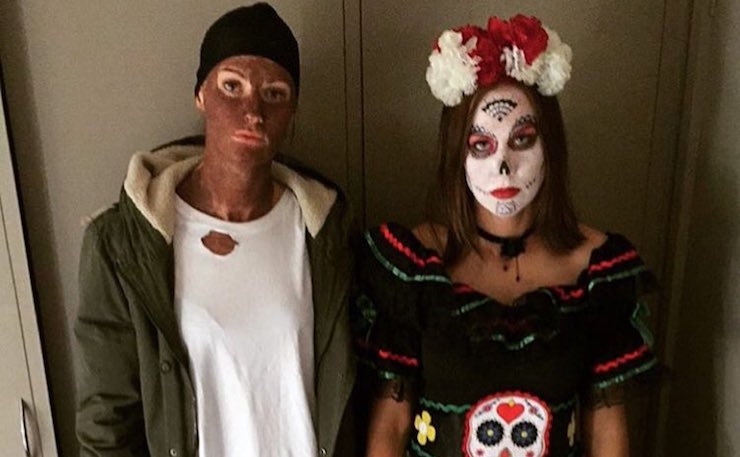OPINION: Another day, another case of blackface. Cameron Smith tries to cut through the noise.
It was two ‘legends’ at an ‘Australian Icons’ themed piss-up in Ballarat a couple of weeks ago. Fox Sports journalists last year. Serena Williams fans at the Australian Open. Hey Hey It’s Saturday in 2009. Yesterday, social media channels everywhere were overflowing with anger over fringe Opals forward Alice Kunek’s woeful blackface ‘homage’ to Kanye West.
That incidents like these are indeed shockingly racist in their humiliation and degradation of people of colour should be clear to most readers (for the unconvinced, here’s a helpful primer). Hence, I won’t argue whether such incidents are racist or not. They most certainly are.
What should be even more concerning to those set against racism is the regularity with which these incidents occur, and the banal, routinised script which accompanies the outrage. The script generally goes like this:
- Racist event occurs
- Said event gets public exposure through mass and/or social media
- Activists, members of the public loudly condemn the event
- Others defend the perpetrator’s character and/or clamour to debate the racist nature of the event
- Perpetrator of racist event either apologises, or stands firm in their ‘non-racist’ ways
- Repeat in a week or two
The discourse provoked by the whole process swells into a cacophony of noise, which eventually dissipates (nb. only for those not directly victimised by the racism) – at least until the next incident occurs. Anti-racist activists condemn the event; others deny that it was racist at all, or point to the ‘upset’ perpetrator’s apology as evidence that the perpetrator isn’t ‘a racist’, though perhaps misguided or naïve. It all makes for quite an unedifying spectacle.
We must understand that this cacophony is a direct consequence of an impoverished understanding of what racism is. Most involved in this process, anti-racist or otherwise, conceive racism as operating purely at the level of individual acts of misbehaviour, rather than in the deep structures that underpin our societal, cultural, political and economic existence.
Absent of these structures, racist events are reacted to only at face value, rather than being placed in the broader social forces and historical patterns which produce them.
In a recent article, Western Sydney University critical theorist Dr Alana Lentin helpfully distinguished between ‘racism in public’ and ‘public racism’ – the former describing the events which make the news and attract the noise described above, the latter turning our attention to the ways in which racial inequality is still at the heart of Australian society – in the societal relations which govern political existence and cultural exchange.
Lentin’s distinction between ‘racism in public’ and ‘public racism’ is a helpful one to make if we want to get past the noise and truly contribute to a society without the racial degradation embodied in blackface and other racist acts.
Instead of getting caught up in the ‘eventness’ of racism in public, we should start by listening to (and expressing solidarity with) those who endure it – not only as events, but as systemic deprivation and violence at the hands of the state, as well as other forces within civil society.
From there, we can collectively proceed to ask ourselves the difficult questions – those that get to the deeper forces and structures that produce the racial inequalities that persist across Australian society.
This is where discussions around a treaty with Aboriginal nations – with sovereignty enshrined, reparations, and land rights – stand to yield significant progress in the pursuit of an Australia without a race problem.
Donate To New Matilda
New Matilda is a small, independent media outlet. We survive through reader contributions, and never losing a lawsuit. If you got something from this article, giving something back helps us to continue speaking truth to power. Every little bit counts.





